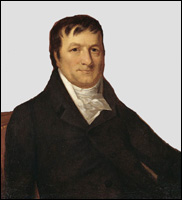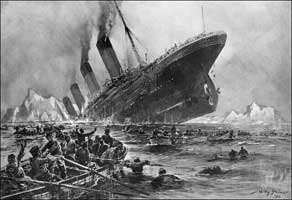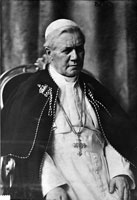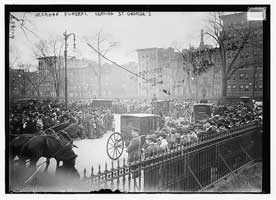John Pierpoint Morgan was a British Secret agent who dominated the U.S. and world economy for over 60 years. With John D. Rockefeller, he created the corrupt 3rd Bank of the "United States" known today as the "Federal" Reserve Bank.
It is ironic that Morgan was born the very year after President Jackson closed the corrupt 2nd Bank of the United States. Morgan the draft dodger and gun swindler!!When the Civil War broke out in 1861, Morgan was only 24 years old. Like his fellow British Secret Service agent John D. Rockefeller, he bought a substitute for $300.00 and sent him off to get killed. More sinister still, Morgan was involved in a perfidious scheme to sell general John C. Frémont its own faulty breech-loading rifles called Hall Carbines.
The government had 5,000 breech-loading rifles left over from the U.S.-Mexican War. The rifles were defective and the government offered to sell them for $3.50 each. Morgan bought them and then sold them back to the same government for $22,00 each: A certain Simon Stevens, who had an option for 5,000 Hall carbines, through another dealer named Eastman, came to Morgan with urgent request for a loan against this war material which he soon hoped to sell to the government at a profit. In advance, he had by telegraph arranged to sell them to General Frémont, who headed the eastern Army quartered near St. Louis. Stevens, who had long been engaged in obscure transactions with customhouse officials, may or may not have divulged that he needed the sum of $17,486 from Morgan in order to purchase the carbines from the very same government at Washington whose army in the West clamored for guns.This paradoxical situation was caused by the fact that the carbines in question were found by inspection to be so defective that they would shoot off the thumbs of the soldiers using them. The quartermaster at Washington sold them for $3.50 apiece. "The government had sold one day for $17,486 arms which it had agreed the day before to purchase for $109,912," as a Congressional committee discovered. That young Morgan knew of this situation is plain from the fact that after arrival of the consignment of guns at General Frémont's division, he bluntly presented his claim not for the money he had advanced, but for all of $58,175, half of the shipment having already been paid already in good faith. (Josephson, The Robber Barons, p. 61). General Frémont was the famous Pathfinder who took California from the British in 1846. He was the first Republican candidate for President in 1856. A hard driving and relentless man, Frémont would have ended the Rebellion in 6 months, but Morgan and company conspired against him, and he was replaced by a loser named general Hunter.
While the Union was fighting for its very existence, Morgan was helping the enemy in Richmond, Montréal, and London, by shorting the dollar every time the Union lost a battle: Thereafter Pierpoint Morgan had confined himself to the routine dealings of the money-changer. When he wished for more bracing sport he frequently entered the gold market and as it was very fashionable to do at the time, sold the dollar short, that is to say he bought future options on gold at rising prices. Owing to the outlook for the Union cause these were reasonably safe operations usually attended with profit. Defeats for the Yankee armies, which came often enough, brought a proportionate rise in gold. In these ventures Morgan usually joined with a shifty young man named Edward Ketchum, son of the well-known banker Morris Ketchum. At one time in 1863 while harassed merchants bid for gold to cover their currency needs, Morgan and Ketchum corralled a goodly part of the immediate supply and shipped away to London $1,250,000, driving the price up from about 130 to 171. (Josephson, The Robber Barons, p. 62). Beginning at the Civil War, Goldfinger Morgan shipped millions of dollars worth of U.S. gold to London. With that gold, and the gold stolen from the Boers in South Africa, London became the financial capital of the world. Morgan was worth more than an entire army to the Confederates. The Civil War was revenge by the British for their defeat by general Jackson at New Orleans and their loss of Oregon and California. Morgan fought a ferocious war against AC current!!Today, 3 phase alternating current electrifies the entire world. What most people don't know is that J. P. Morgan and his crony Thomas Edison fought a ferocious battle against alternating current. It is called the War of the Currents, and lasted from 1885 to 1912.
At that time, Thomas Edison was totally ignorant of the advantages of AC. Edison could be forgiven for his ignorance at that time because nobody yet knew of the vastly superior qualities of alternating current.
Tesla went to work for Thomas Edison immediately after his arrival in the U.S., and he showed Edison his design for an alternating current motor....Edison the dunce couldn't recognize genius when he saw it! Edison set him to work fixing the many problems with DC dynamos. Tesla had remarkable mechanical and electrical ability, and Edison promised him $50,000 if he could fix a particularly perplexing problem with a dynamo. Tesla worked for many months and finally the problem was solved. Did Edison keep his promise and pay him for all his hard work?. . . absolutely not....Tesla quit the Edison Company in disgust: For
a paltry few thousand dollars they lost not only a man who would have
saved them many times that amount each year, but they also lost an opportunity
to obtain world control of the greatest and most profitable electrical
invention ever made.
(O' Neill, Prodigal Genius, p. 58).
After quitting the Edison Company, Tesla had to work as a manual laborer for a year digging the streets of New York. This was the worst time in his life as a poor stranger in a strange land....He was befriended by the foreman of the work gang who persuaded him to form his own company.
Edison was a cat's paw or errand boy for Morgan. Morgan ordered Edison to prove that AC was killer current. A new word was invented called ELECTROCUTION to describe death by electricity.
On August 6, 1890, William Kemmler was the first man to die in the electric chair. The first application of current was botched and Kemmler did not die until the current was fired up a second time. When he was dead, the Morgan owned newspapers (New York Times) said that he had been "Westinghoused." Thank God that this desperate, deadly gambit by Morgan and Edison failed to turn people away from AC and eventually AC triumphed over DC and became the standard universal current. J. P. Morgan owned the Titanic!!April 15, 2012, is the 100th anniversary of the sinking of RMS Titanic. Morgan was the owner of the White Star Line which owned the "unsinkable" Titanic. After 1870, the White Star Line began bringing millions of Latin Church members to the United States. As late as 1912, mad Morgan was still at war with Nikola Tesla. Tesla proposed the wireless transmission of electricity and John Jacob Astor was his main financier. Morgan's modus operandi was very simple: lure Nikola Tesla's main financier: John Jacob Astor aboard the Titanic and sink her in the middle of the Atlantic Ocean.
Colonel John Jacob Astor IV was a close friend and financier of Tesla. Tesla lived at his hotel, the Waldorf Astoria, in New York City.
Tesla's wireless transmission of electricity offered free electricity to the entire world. That was just too much for Morgan and the Bank of England. They wanted to control all forms of energy around the world. Morgan died after visiting the Pope!!J. Pontifex Maximus Morgan died in Rome on March 31, 1913. He had just delivered an oral report to Pope Pius X on the progress of his takeover of the United States. The report must have been optimistic because he received the Papal "blessing" for a job well done . . . but he died shortly thereafter!
Only months after Morgan's death, the corrupt 3rd Bank of the "United States" was chartered; and in 1917 the United States was lured into war in Europe by MI6. References Jones, Jill, Empires of Light. Edison, Tesla, Westinghouse and the Race to Electrify the World. Random House, New York, 2003. Josephson, Matthew. The Robber Barons. Harcourt Brace & Company, New York, 1934. O' Neill, John J. Prodigal Genius. The Life of Nikola Tesla. Ives Washburn, New York, 1944. Vital Links Copyright © 2014 by Patrick Scrivener
| ||||||||||||||||||||||||||||||||||||||||||||||||||||||||||||||||||
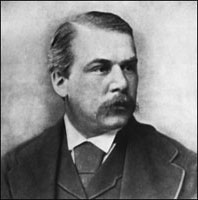
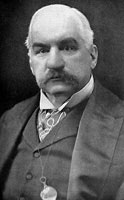


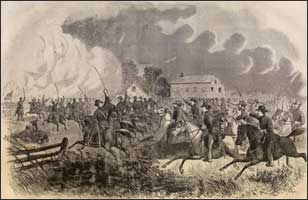 General
Frémont
leading
his troops at the First
General
Frémont
leading
his troops at the First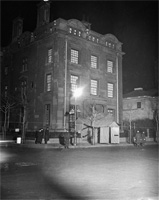
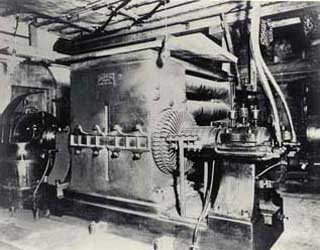

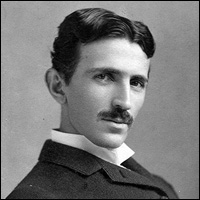
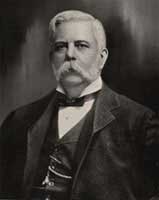
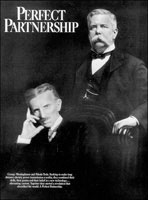
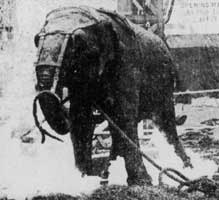
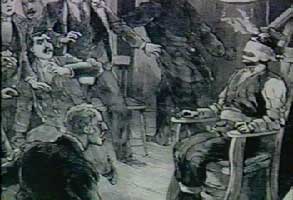
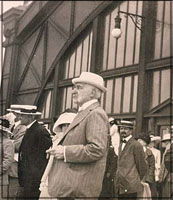
 RMS
Titanic departing Southampton on April 10, 1912.
RMS
Titanic departing Southampton on April 10, 1912. 